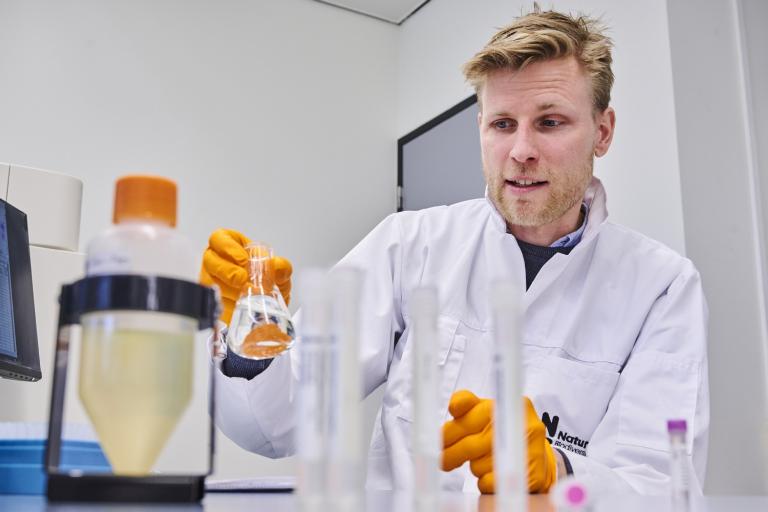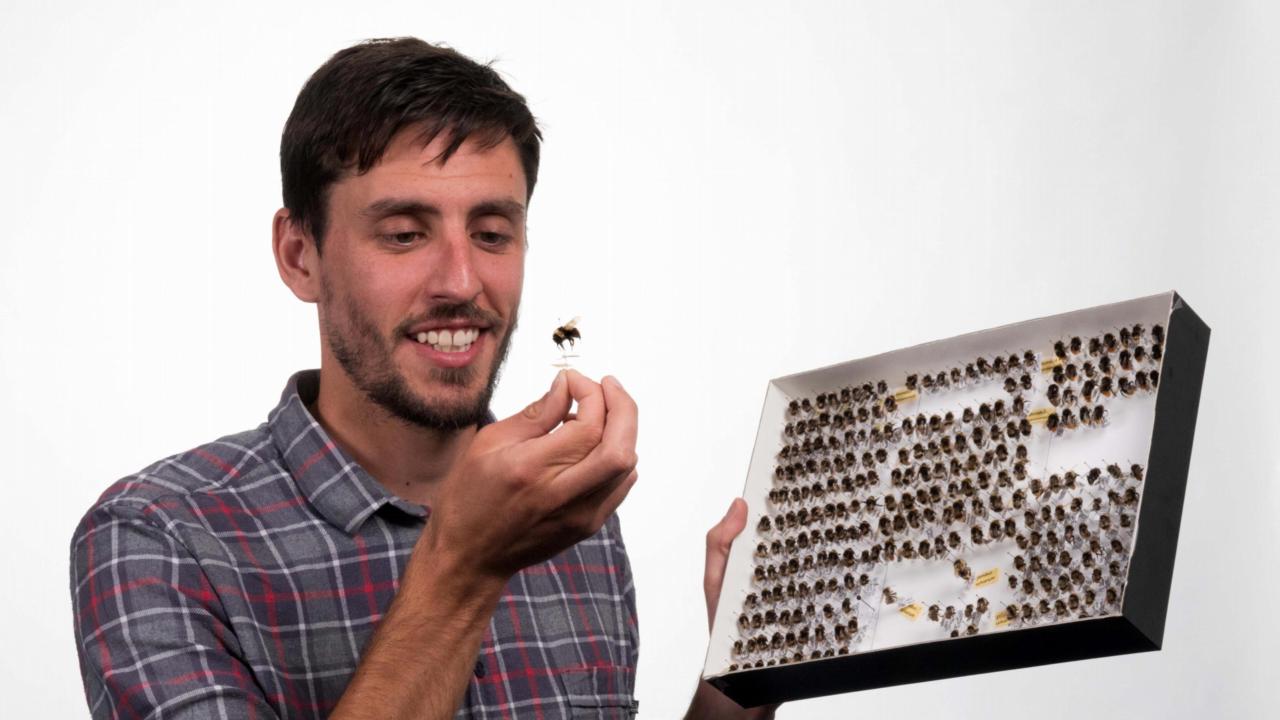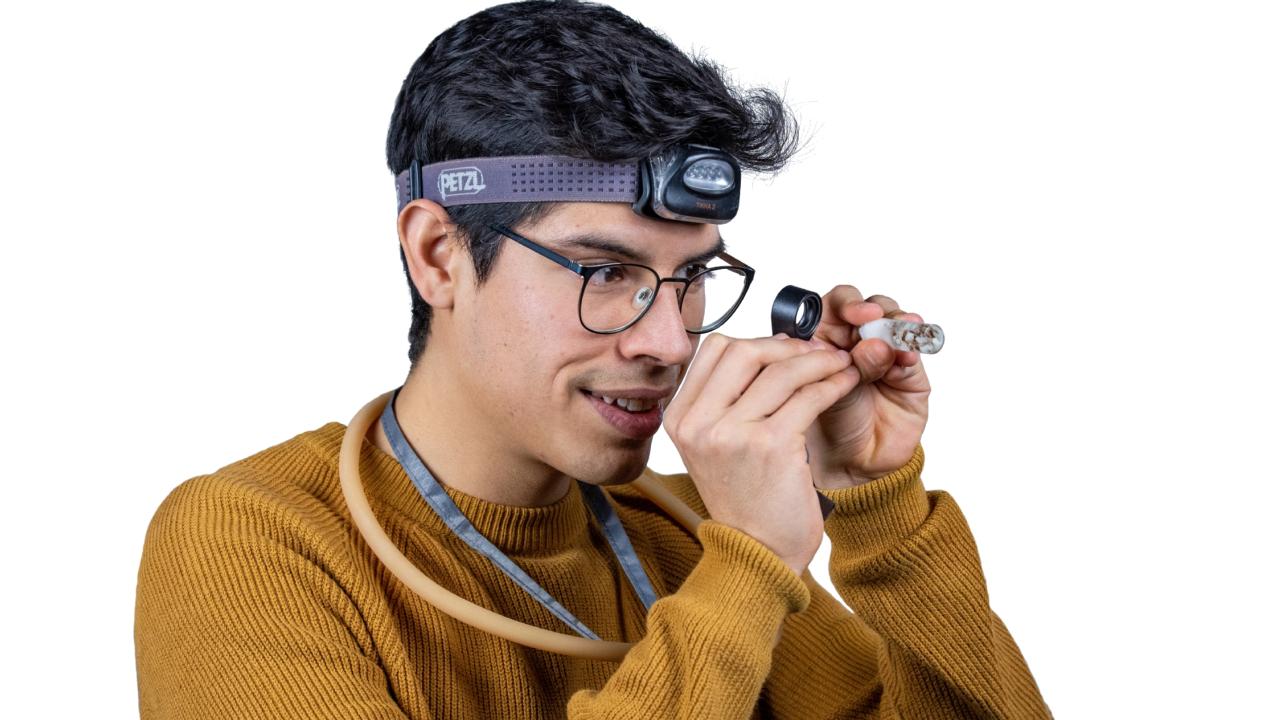
Three newly promoted Naturalis researchers received a Veni grant through the NWO Talent Program, to kick-start their scientific career. It gives the scientists the chance to further develop their ideas over the next three years in the areas of herbs turning woody, modeling techniques for plants and pollinators, and the eye-brain system in spiders.
Youngtalents
The three young talents are Kasper Hendriks, Leon Marshall and Andres Rivera-Quiroz. All three have successfully defended their PhDs and are now ready for the next step in their scientific careers. That step is supported by a financial award from the Netherlands Organization for Scientific Research (NWO), the Netherlands' national science funder.
When herbsbecome woody
How did woody plants originate? And why? A tricky question, with no single clear answer. In the history of plants, the emergence of wood occurs as many as 700 times independently, an example of convergent evolution. It poses a complex evolutionary puzzle, which researcher Hendriks will spend the next four years wrapping his head around.

Adapting food crops
To do so, Hendriks will focus on the mustard family, known for broccoli, radish and arugula, among others. He hopes to unravel where, when and why woodiness arose in the mustard family. "Becoming woody is a possible adaptation of plants to drought," Hendriks says. "And as we know from the news, extreme heats are becoming a bigger problem." Adapting food crops to a hotter climate could be a solution to future-proof food production. “For this, however, we first need to know for sure if this line of thinking about why herbs become woody is correct. That is what I hope to find out."
Predicting interactions between species in time and space
All species are interconnected. The more interactions a species network has, the healthier and more stable our ecosystems are. One way to study these intricate networks is to use statistical models. This is what researcher Leon Marshall does. He uses these models to predict where certain species occur now and might occur when the environment or climate changes. His upcoming research will take this approach a step further.

Better protect species
"Species interactions are rarely part of these prediction models," Marshall explains, "while they are a crucial component to understanding biodiversity patterns." One of the most important and well-known interactions is that between flowers and pollinators. Marshall hopes to better understand this interaction, combining ecological knowledge and new modeling techniques to predict plant-pollinator communities, where they occur, and what connections and networks they form. Both now and in the future. “I hope that when we better understand these interactions, we can better protect plant and pollinator species."
Into the brain of an eight-eyed hunter
Spiders have brains the size of a poppy seed, but with the capacity to process information from eight eyes. Most spiders have relatively poor vision, but some have evolved great sight using their vision to actively catch prey. Therefore, their brains provide an exciting model for studying the eye-brain system. A complex system, which Andres Rivera-Quiroz hopes to discover more about through his research.
To do so, he will dive into the internal anatomy of spiders, using micro-CT scanning. This technique cuts digital slices of an object to view its internal 3D structure. "I will compare three spider families, the jumping, wolf and ogre-faced spiders, which use their specialized eyes to hunt their dinner”, Rivera-Quiroz explains. He will examine brain size and structural complexity in relation to eye enlargement, reduction and loss. "How did the brain and eyes evolve together to form this complex system?" asks Rivera-Quiroz. His answer will provide insight into information processing and the evolutionary origins of complex behavior.

Moreinformation
- The Veni is awarded annually by NWO. For more information about the NWO Talent Program, visit here.
- Visit the profile pages of Kasper Hendriks, Leon Marshall and Andres Rivera-Quiroz for more information about their research areas.
- Read NWO's news release on all Veni awards here.